What's gone wrong with Mighty No. 9?
Digital Foundry on the bugs, performance issues and oddities found on PS4 and Xbox One.
On the face of it, Mighty No. 9 shouldn't be causing PlayStation 4 or Xbox One any problems. After all, it's a simplistic Unreal Engine 3-based side-scroller, and despite its humble origins as a Kickstarter-funded project, this should be a fairly easy win for Keiji Inafune and his team at Comcept. As a spiritual successor to Mega Man, we expected rock-solid 60fps platforming, a firm-but-fair level of challenge and something close to the visual style shown in its original pitch. What we've ended up with is something remarkably sub-par.
Visually it's an unwanted shift from that early concept. The lighting model is changed entirely, and in its place we have an attempt to recreate something akin to the look of a Saturday morning cartoon. The introduction of some colour is welcome, but background detail is too lightweight to impress - made up of copy-pasted 2D foliage, box-cut geometry and low resolution textures. It's a massive change in style, perhaps catering to all platforms within the team's remit, including PS3, Xbox 360 and Wii U - not to mention 3DS and PS Vita. However, the end result is little that plays to PS4 and Xbox One's strengths, besides running at native 1080p.
It's confirmed that the delayed handheld versions run on different tech entirely to the home console versions, rebuilt from scratch by developer Engine Software. However, Comcept has evidently overstretched itself with support for so many formats, and in the process, PS4 and Xbox One alone show a myriad of issues. We've put together a short list of the main points of concern for us right now - with the hopes something can be done via an upcoming patch.
PS4 has performance issues: While Mighty No. 9 runs at 60fps for long stretches, PS4 can't hold this frame-rate everywhere it goes. The game stutters whenever we dash into a new enemy, for example, creating a visible hitch in play as we move left-to-right. Dips to 45fps are also an issue on the second Oil Platform stage, where alpha transparency effects knock the game's frame-rate down on PS4.
However, it's the real-time reflections that have the biggest impact on PS4's frame-rates. This effect is used in a segment of the Water Works Bureau stage, causing an immediate lock to 40fps for as long as they're rendered on-screen. It's a side-effect of the 'double-buffer v-sync' mode used on PS4, meaning the game regularly switches between a fixed 40 or 60fps here - where normally they could meander in-between these figures. Instead we're left with a distracting judder to lateral movement at these points, though the lack of screen tear is a plus.
Xbox One has performance issues of its own: Microsoft's console takes a different approach to performance. An adaptive v-sync is in place enabling higher frame-rates compared to PS4, notably in the Water Works Bureau area with its taxing reflections. However, the downside is that Xbox One suffers from heavy screen-tearing whenever there is a drop from 60fps, with frames rendered in an incomplete state. The game can indeed hit its target frame-rate for long passages of play, but any drop from this number cues frames to visibly slice in half as the screen pans across.
The end result looks very ugly in places. A later Highway level really stretches the console, and here the game runs at a pretty much constant 40fps, with ever-present tearing artefacts across the screen. The extra layer of rain is the likeliest culprit of this performance toll, though surprisingly, PS4 sticks much closer to 60fps here. Even with its sudden lurches, PS4 has an upper hand in frame-rate on this level, while other stages show the exact reverse.
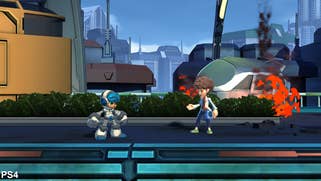
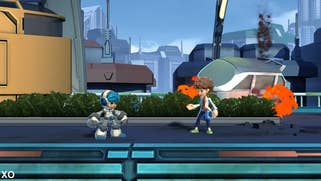

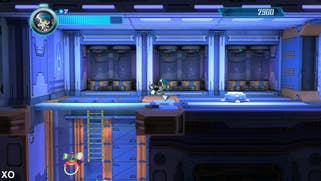
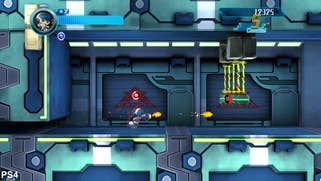

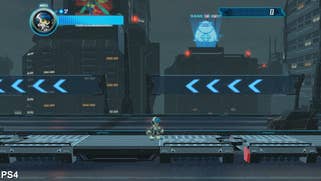
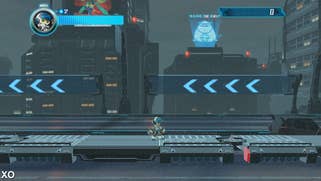

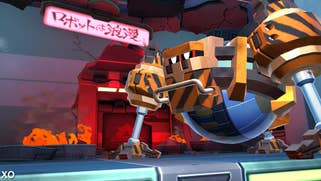
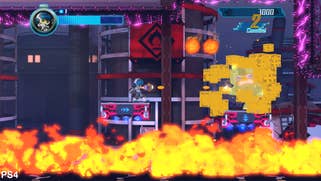
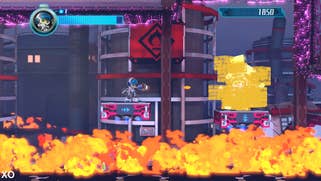
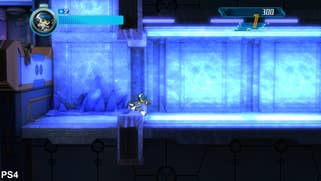

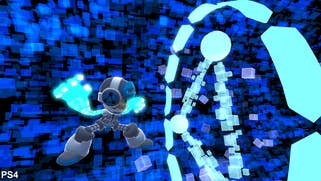

The v-sync toggle doesn't work: Frame-rates are far from ideal on either PS4 or Xbox One - with one locking to 40fps as a result of v-sync, and the other suffering from heavy screen tear. Surprisingly, there's a v-sync option in the game's console menu that promises to let us choose the alternative, if we'd prefer it. The bad news is this setting doesn't actually work on either platform, and switching it on or off has no impact on the game's v-sync (or lack thereof). The v-sync setup on PS4 and Xbox One is fixed in place no matter what you do, and even after a full restart, this toggle has no affect.
Bloom lighting is disabled on Xbox One: On top of this, Xbox One is missing a bloom effect present on PS4. The ice pillars of the Water Works Bureau stage, for example, feature a glowing halo effect on Sony's machine, while Xbox One delivers them raw. Changing the bloom option in its menu does nothing to fix this on Xbox One, and it appears the developer has simply disabled it for this level (and in other instances too). The effect is aggressive on PS4, and might not be to all tastes, but there's no doubt the option to select it should work if it's there - which it doesn't.
Real-time reflections are broken on Xbox One: There's an issue with the game's reflections here, causing this element to run at 45fps. It means reflections for characters, backgrounds, and even bullets lose sync with the action, and the mirror image always stutters behind actual 60fps gameplay. The results are jarring in motion, especially for a side-scrolling shooter. It's interesting to note that this doesn't appear to be an issue on PlayStation 4.
PS4 uses weaker texture filtering: Similar to several titles this generation, texture filtering is of much higher quality on Xbox One. In Mighty Number 9's case, it makes a notable difference to the way textures appear on-screen, owing to the way surfaces are presented at a 2.5D angle. It falls in line with many Unreal Engine 3 titles on the current consoles, where PS4 treats all floor details to a lower quality trilinear technique. It doesn't play well with the game's default camera angle, and Xbox One benefits hugely from using a form of anisotropic filtering instead.
After multiple delays, Mighty No. 9's three year spell of development is broken with a harsh reality check. The final product has the skeleton of a true Mega Man successor, with a solid gameplay concept and great soundtrack to back it. But this is sadly marred by struggling frame-rates, missing visual effects and broken menu options. We would hope that a follow-up patch is being primed to fix these problem for the sake of the game's many hopeful Kickstarter backers, but it's remarkable that QA is so lacking here when even cursory look at the code throws up so many obvious issues.
We'll be taking a look at Wii U and PC in due course - where the latter should let us see how the game runs at its potential best. Early experiences with the Wii U version are especially concerning, with signs that its frame-rate falls below the wavering levels on PS4 and Xbox One. We'll be back with a separate update once we have all the details.



